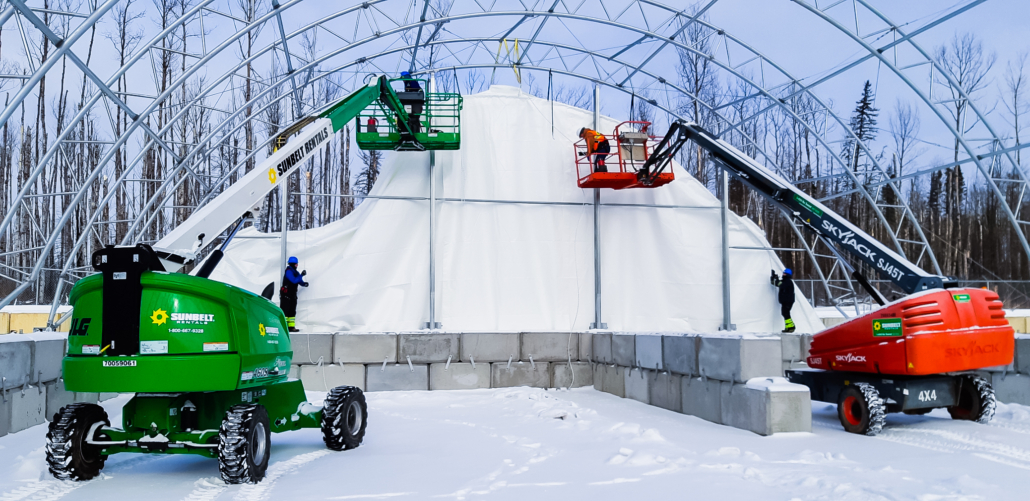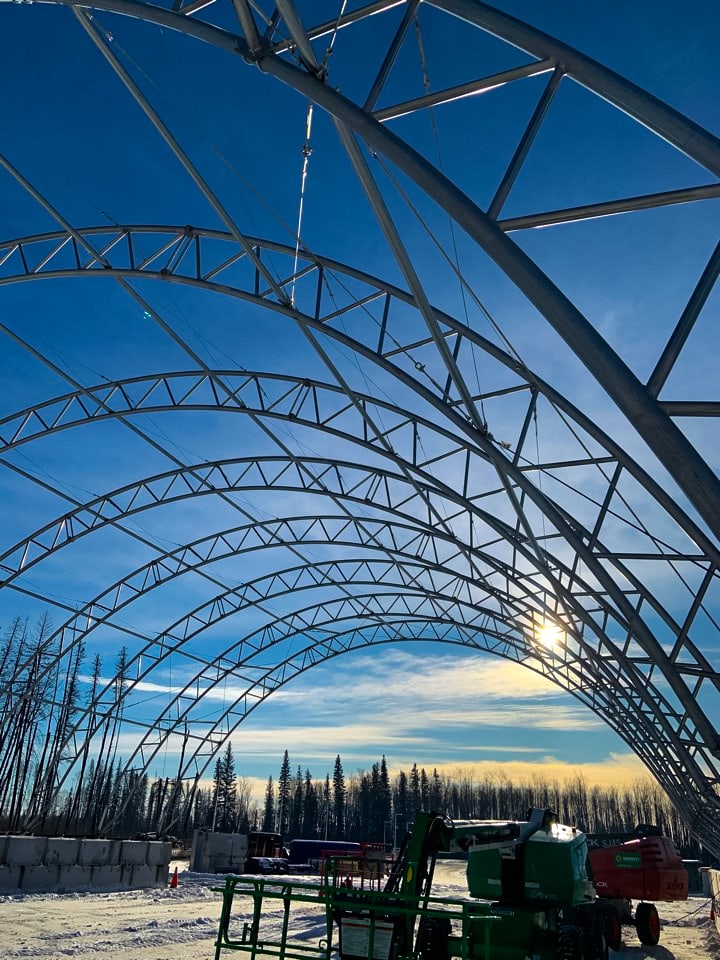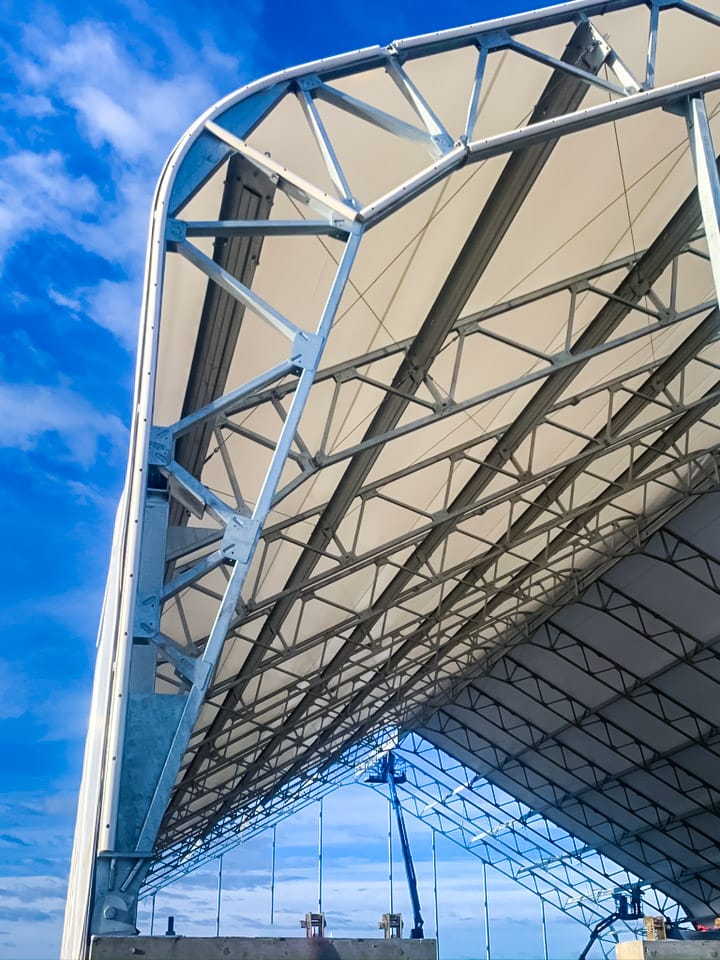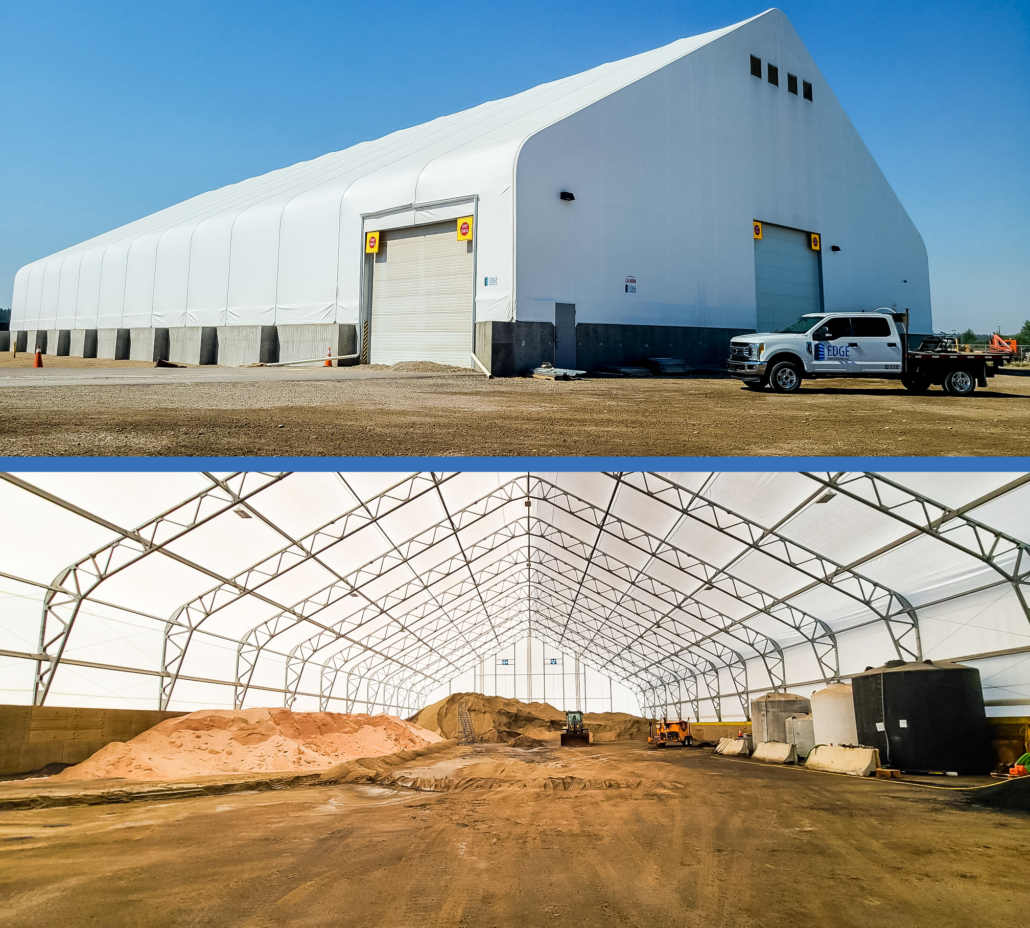Believe it or not, fabric buildings have a long and fascinating history. These constructions have developed into a sustainable, workable solution of sophisticated tension fabric structures built with technological textiles and steel but had their beginnings in the early days of basic fabric stretched over existing limbs. What does the future hold for this adaptable and cutting-edge structure type? Let’s find out.
Fabric Buildings of the Past
Fabric structures, as any form of shelter, were probably used in the earliest human history. Even though none of these structures have withstood the test of time, it’s likely that early man covered tree boughs with animal skins to keep warm.
In fact, in the Siberian Steppe and the Ice Age, remains of primitive shelters made of animal skins wrapped between sticks have been discovered marking the first appearance of fabric constructions about 44,000 years ago.
Elegant royal tents became popular throughout Western Europe in the eleventh century. Throughout the sixteenth century, these “novelty” buildings increased in size and ornamentation, becoming signs of excess and riches at special occasions and competitions.
Since the 1500s, tent-like fabric buildings like teepees and military barracks have been in use. These frail houses offered shelter and warmth for their inhabitants, although they were very different from the tension fabric buildings today.
Around London in 1770, the first circus tent was created. Nearly a century later, traveling circuses began to appear in America. These fabric buildings were made utilizing an early kind of mass production, which gave rise to the low-cost constructions we see today.
Since 1838, air tents, which are made of cloth and supported by blown air, have been utilized for a variety of uses, such as radar dish housing and protection.
German architect Frei Otto began research in the 1950s that eventually produced tension fabric buildings based on his observations of the tension shapes produced by soap bubbles.
Advantages of Fabric Structures
There are a myriad of benefits to fabric structures. They are far more affordable than comparable-sized conventional structures constructed of metal, wood, or poles. Additionally, they are simple to put together, disassemble, and move – reducing their set-up time while increasing their versatility.
Even in corrosive settings with salt spray, chemicals, or blowing sand and debris, the sophisticated, highly constructed tensile coverings of fabric buildings require little to no maintenance.
Lastly, fabric buildings are translucent and let in enough natural light to help you save money on energy costs.
The Future is Fabric
Enter the 21st century, which brings with it pressing global challenges like population growth, habitat loss, carbon emissions, and other forms of pollution, or, to put it simply, the threat of depleting resources and climate change.
Fabric buildings have a significant role to play in building an eco-friendly future according to many architects and designers who are responding to the clarion call of environmental sustainability.
Building construction has significant adverse effects on our environment and the earth’s resources which is no mystery to anyone in the industry. Our global carbon footprint is increased by the massive amounts of materials used on every construction sites, but fabric buildings negate many of these drains on the planet’s resources – from construction to use.
Of course, it’s still crucial for producers and suppliers to know where, by whom, and under what circumstances fabrics are made, as well as to check the provider of their chosen fabric structure solution is up to snuff with sustainability standards.
What about style? Can fabric structures use a range of effective aesthetic techniques while remaining a functional, sustainable solution? They can when you work with Edge Inc. Not only are our fabric solutions versatile, cost-effective, and energy-efficient, but they are also customizable so you can design them to fit exactly your style and functionality needs.
All in all, fabric structures have been around for longer than you may first assume, and they’re certainly not going anywhere anytime soon! Be sure to head over to our website for more information on our unique, functional fabric solutions and their many use cases. If the future is fabric, let it be Edge Inc fabric: the most durable, functional, affordable option around.






